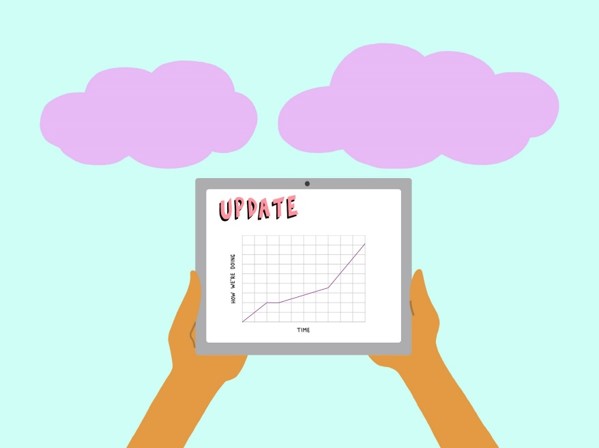
Intro Why How What Who Resources
Welcome to the ucisa Communications Toolkit
|
"Getting your IT communications right can lead to improved customer trust, reputation and engagement. As IT Services teams we need to communicate effectively with a vast range of different stakeholders. The aim of this Toolkit is to provide the UCISA community with a resource that anyone involved in IT communications can use. Whether you have an embedded communications team, a central university team or it’s everyone’s responsibility, there’s always room for improvement, and we hope that even someone who has worked in comms for several years can learn from this resource.” Sarah Kennedy | Head of Desktop and Printing Services, IT Services, University of York
|
In this Toolkit you’ll find sections on pretty much everything an IT department might want to think about in terms of communications – from writing a strategy, or managing your social media, to promoting new services - as well as day to day communications such as planned changes or current incidents.
In each section we bring together examples we’ve found from across the HE and FE sectors, which we hope will inspire you – or at least get you thinking! It’s just the beginning… the aim is for the Toolkit to grow and develop over time – a resource for the community, created by the community. So if you have some great content you’d like to share or if you think there’s a whole section we’ve missed, let us know.
The Project team
- Emma Barwell, IT Communications Manager, Oxford Brookes University
- Henrik Brogger, Head of IT Service Delivery, IT Services, Queen Mary University of London
- James Childs, University IT Services, University of the Arts London
- Claire Donlan, Customer Services Manager, Information Services, Heriot-Watt University
- Rachel Fligelstone, Head of Service Strategy and Communications, Lancaster University
- Katie Langford, IT Communications Business Support Officer, IT Services, Leeds Beckett University
- Jon Lucas, Head of IT Engagement, University IT Services, University of the Arts London
- Jo Mortimer, Project Manager Supporting Change, Electronic Management of Assessment Programme, University of Reading
- Sarah Peace, Head of Desktop and Printing Services, IT Services, University of York
- Gordon Roberts, Assistant Director of IT, University of Bath
- Tony Wright, Head of Service Delivery, Information and Library Services, University of Greenwich
Sarah Kennedy, Head of Desktop and Printing Services, IT Services at the University of York led the project to develop the community resource. Anna Mathews, former Head of Policy and Projects at ucisa was the project manager for this resource, with assistance from Sarah Martin, former ucisa Projects Administrator. The project was initiated by the ucisa Support Services Group.
All illustrations are by Lottie Walsh, Technical Assistant, University of York and Oliver Berman Web Designer/Graphic Designer at University of the Arts London.We would like to thank the University for the Arts London for the design and creation of the resource website with particular thanks to Rick Lecoat, Senior Web and Graphic Designer, University IT Services and Jon Lucas, Head of IT Engagement, University IT Services.
Meet the Team
Acknowledgements
We would like to thank the following colleagues who have provided materials for the Toolkit:
- Sally Bogg, former Head of End User Services, Client Services, IT Services, Leeds Beckett University
- James Brimble, Head of Governance, IT Services, University of Bristol
- Joanne Casey, Senior Content Producer and Non Faculty Team Lead, Marketing Services, University of York
- Dave Churchley, Data Integration Analyst, Newcastle University
- Marc Bennett, Learning Technologist, Newcastle University
- Dr Christopher Dickson, Enablement Manager, Research and Environment, University IT, Cardiff University
- Steven MacDonald, Assistant Director - User Services, Computing Services, University of Bath
- Drew McConnell, Information Officer, Information Services, University of Glasgow
- Lisa McDonald, User Support Manager, University of Edinburgh
- Martin Putwain, Service Support Manager, University of Manchester
- Jill Shacklock, Information Officer, University of Brighton
- Chris Shimmin-Vincent, Service Manager (IT Literacy), Computing Services, University of Bath
- Lorraine Spalding, Communications Officer, Lecture Recording Programme, University of Edinburgh
- Mike Thorpe, Marketing and Communications Officer (Service Communications Lead), Directorate of IT Services, University of Manchester
Copyright
This publication is licensed under the Creative Commons Attribution-NonCommercial 4.0 International licence. Subject to the source being appropriately acknowledged and the licence terms preserved, it may be copied in whole or in part and incorporated into another document or shared as part of the information given, except for use for commercial gain.The publication also contains resources from institutions; where this material is copied or otherwise reused, both ucisa and the institution concerned should be acknowledged. The information contained herein is believed to be correct at the time of issue, but no liability can be accepted for any inaccuracies. The reader is reminded that changes may have taken place since issue, particularly in rapidly changing areas, such as internet addressing, and consequently URLs and email addresses should be used with caution ucisa cannot accept any responsibility for any loss or damage resulting from the use of the material contained herein.





